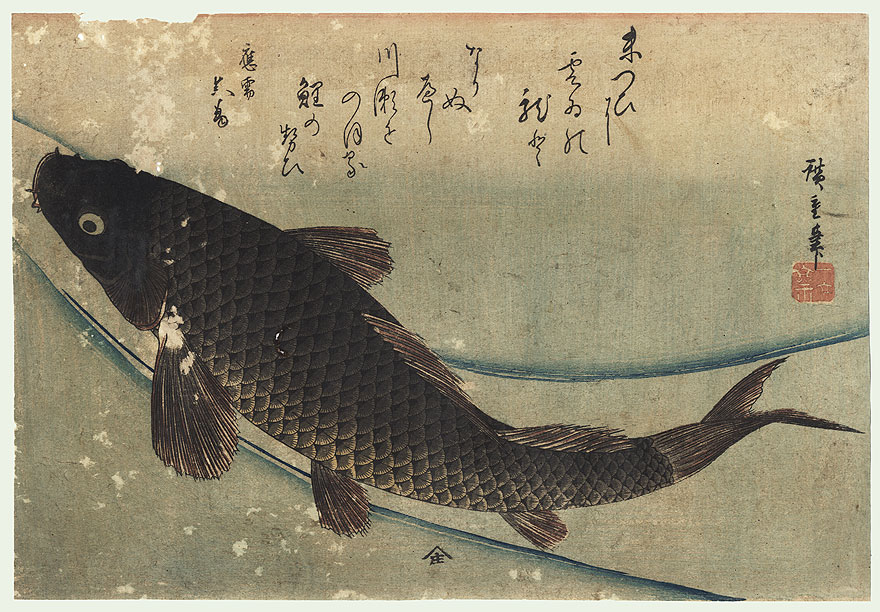7 in (17.8 cm) high, 15 ½ in (39.4 cm) wide, 11 in (27.9 cm) deep
cf. Victor Arwas, Art Nouveau: The French Aesthetic. London, 2002, p.446
Janine Bloch-Dermant, The Art of French Glass, New York, 1980
Jean-Paul Bouillon, Christine Shimizu, and Philippe Thiébaut, Art, Industrie et Japonisme:
Le Service 'Rousseau', Paris, 1988
Victor Arwas, Glass: Art Nouveau to Art Deco, 1987, p.267-269
Although he had not trained as a glassmaker, Rousseau was intrigued by the possibilities offered by the material. Initially, he turned to the Appert Frères (Adrien and Léon) in Clichy to make his designs, and even after he began to make his own pieces, he continued to rely on their advice regarding the chemistry of glassmaking. His work with the material was highly experimental; he revived old techniques of overlay or cased glass made of a number of differently-coloured layers, with opaque outer layers which could then be carved, revealing translucent colours beneath. He also became well known for his crackled glass, made by immersing the hot object in cold water between two firings, causing sparkling cracks to spread over the surface. Using these various techniques, he created imitations of gemstones as well as sculptural and etched pieces of glassware, receiving wide acclaim at the Universal Exhibition in Paris in 1878.
In 1877, Rousseau was joined by Ernest Léveillé, initially his pupil, who by 1885 had become an associate and, in 1888, was entrusted to direct the firm. While pieces by Rousseau alone are rarely signed, those created by the two artists often carry both signatures together. After Rousseau’s death in 1891, Léveillé remained loyal to the principles and techniques pioneered by Rousseau and continued to create striking, sculptural pieces of glasswork with increasingly complex coloured layers.
The Maison de L'Escalier de Cristal was established in 1802 by the widow Mme Desarnaud, née Marie-Jeanne-Rosalie Charpentier, who managed the business. She exhibited, to great acclaim, at the 1819 Exposition des Produits de l'Industrie held at the Louvre, Paris.
The business with a shop and workshop was based in the Palais Royal, a centre of excellence for high quality jewellers, silversmiths and manufacturers of objects of vertu, for which Paris was renowned.
The firm of l'Escalier de Cristal was the first manufacturer to mount crystal with gilt-bronze. These were supplied by Aim-Gabriel d'Artigues (d.1848) who in 1802 had bought the Vonche glass factory in the Ardennes (later to become the Baccarat crystalworks); they were shipped and finished in the Palais Royal workshops.
The luxury store, Maison de L'Escalier de Cristal, supplied clocks, vases, lamps and other objets d'art to ruling families in Europe, and was appointed fournisseur brevet du Roi in 1819, garde meuble de la couronne as well as furnisher to the Duc de Berry. It dealt in and carried an extensive stock of porcelain, some of which it mounted. The company produced furniture and all kinds of luxurious objects, commissioning manufacturers to supply individual components which were then assembled to the firm’s own design, very much in the tradition of the marchand merciers of the 18th century from whom they inherited their specialist profession.
In 1828 the business was led by a Monsieur Boin and Mme Desarnaud died aged 66. They later moved to premises at 162 & 163 Palais Royal. Maison de L'Escalier de Cristal succeeded in producing objects to new designs, mainly due to Émile-Auguste Reiber (d.1893), Christofle’s chef des dessinateurs who, inspired by the arts of Japan, imitated Japanese production techniques and adapted designs to produce stunning articles for the 'hungry' European market.
With the onset of the Great International Exhibitions during the second half of the century coinciding with the relaxation of the strict Japanese entry rules for Europeans, the vogue for these new 'exotic' styles was at its peak at the time of the Exposition Universelle in 1867.



















